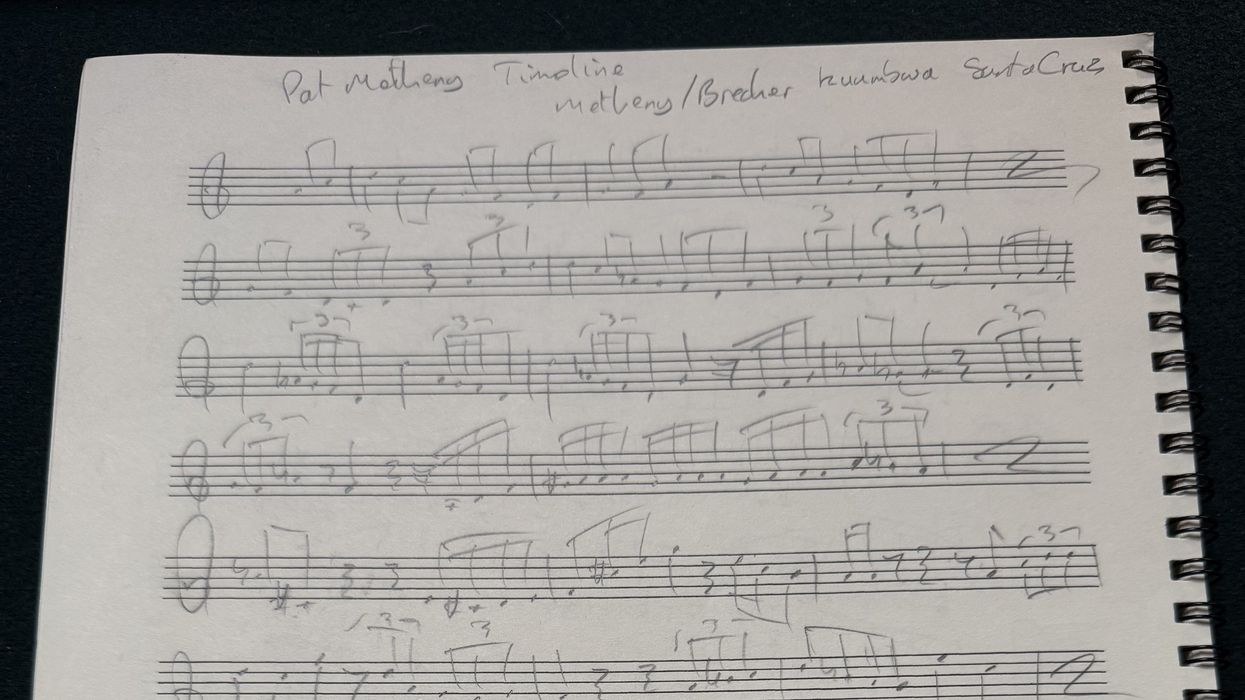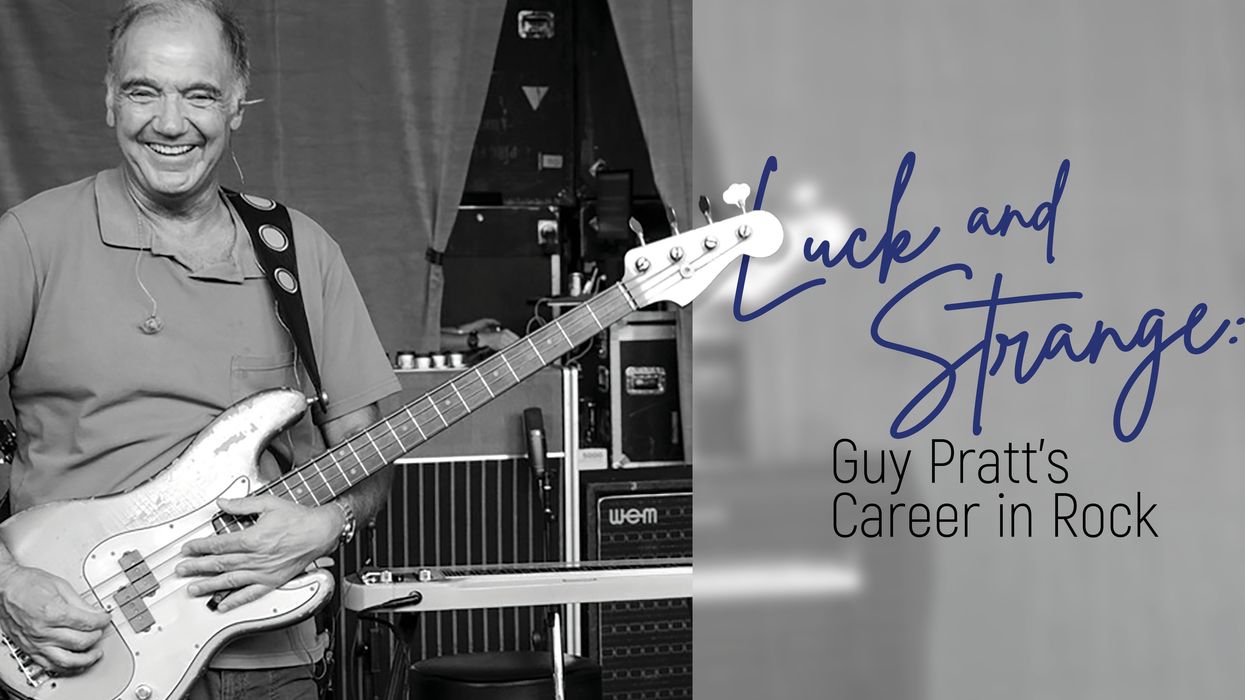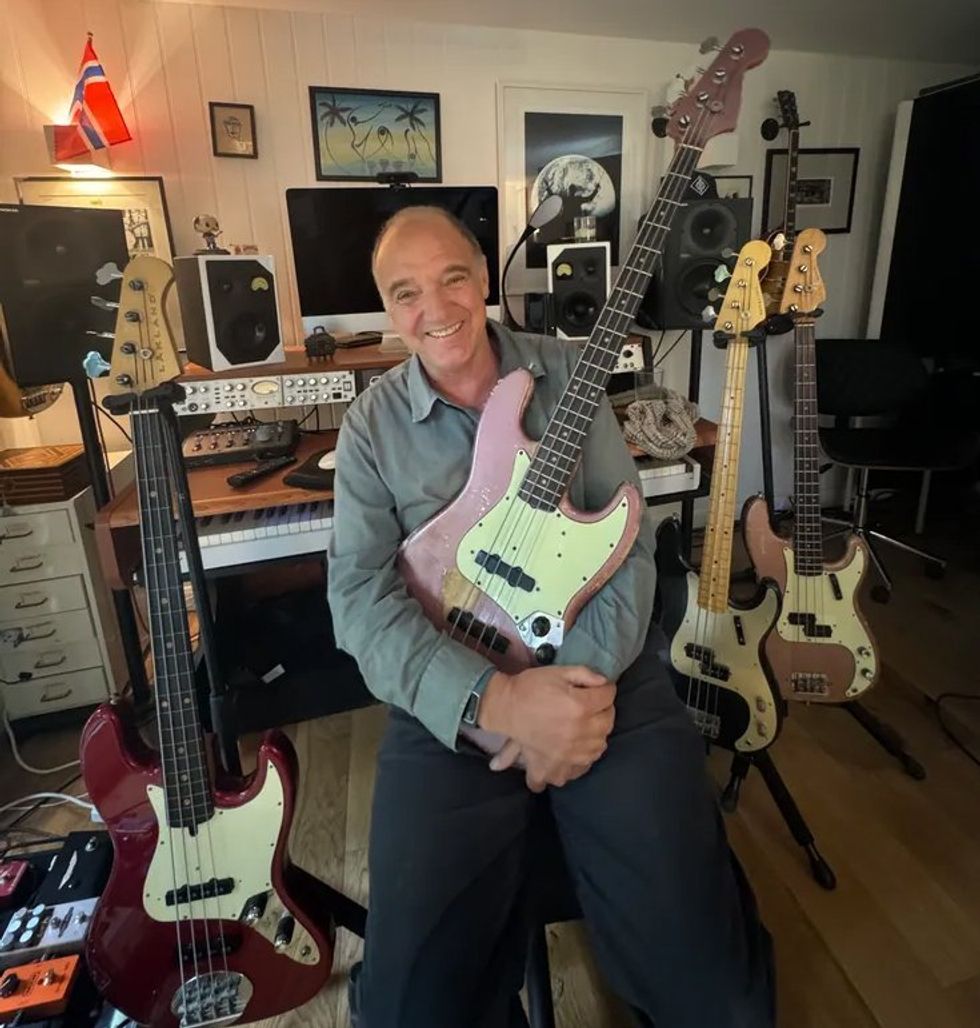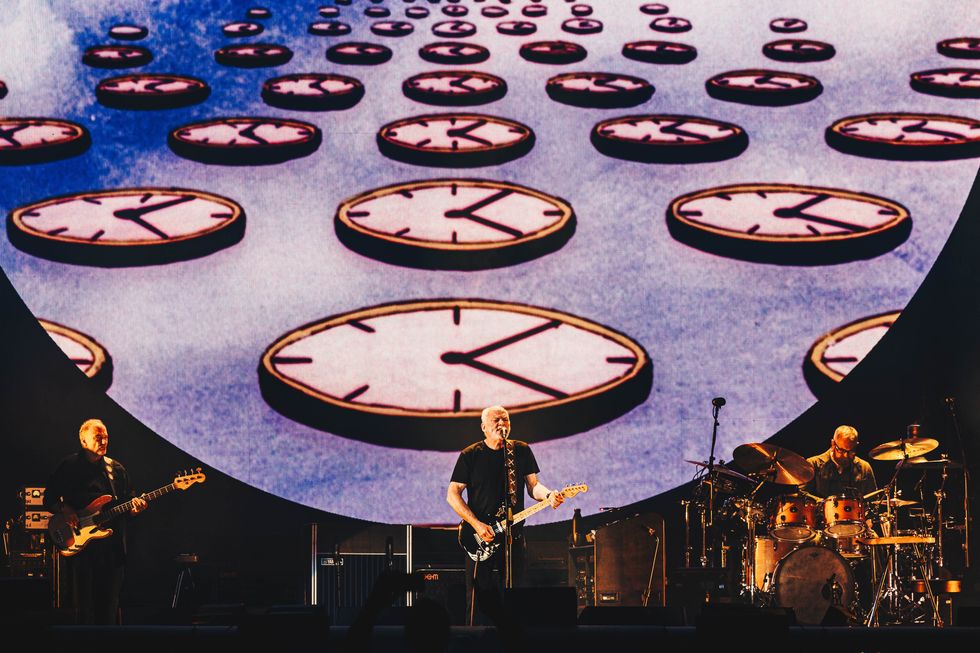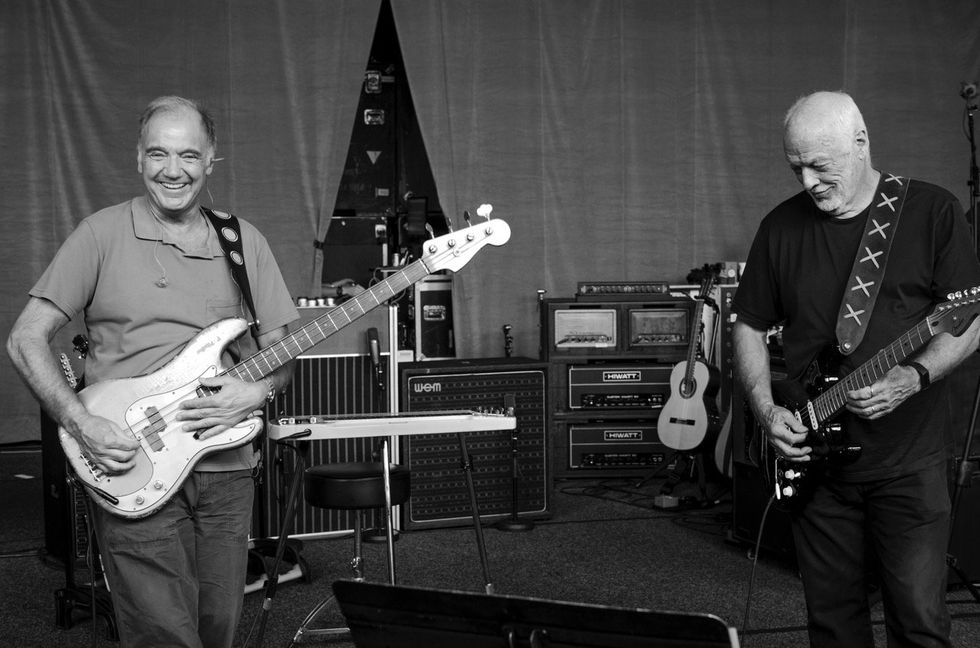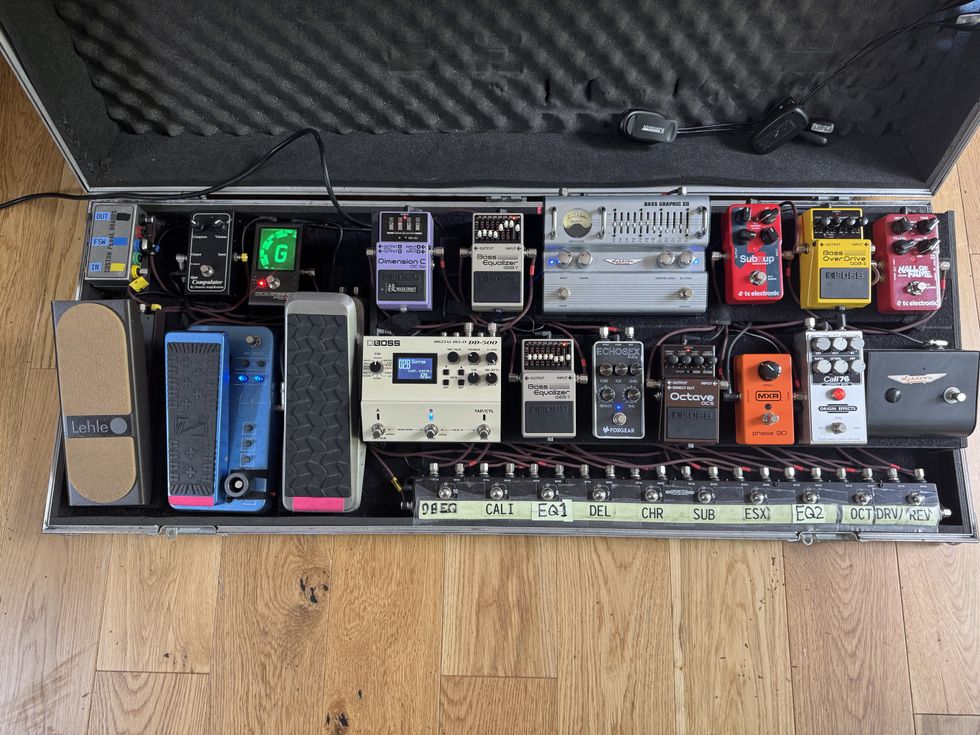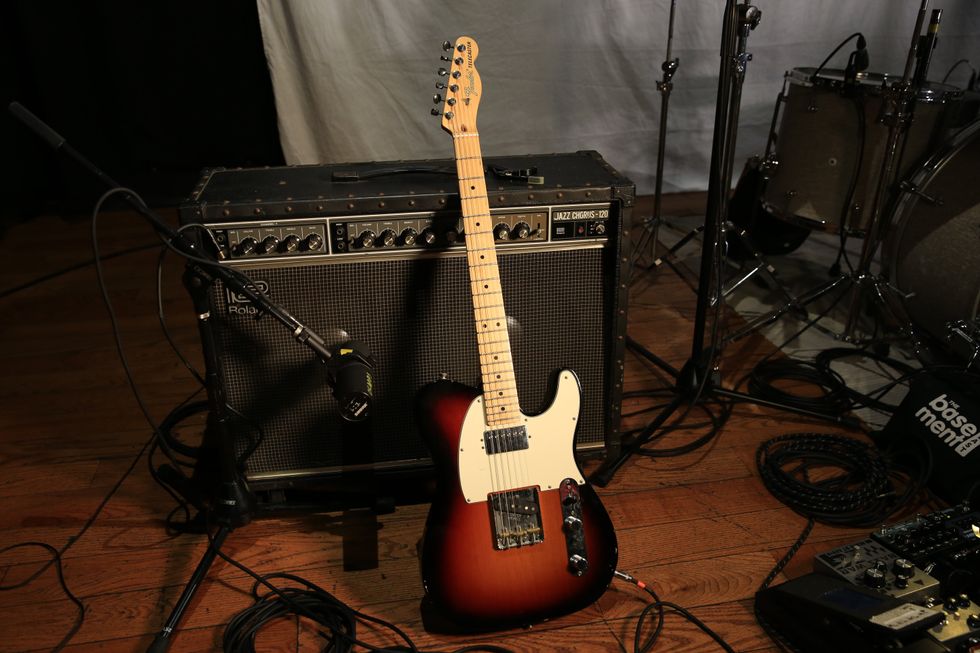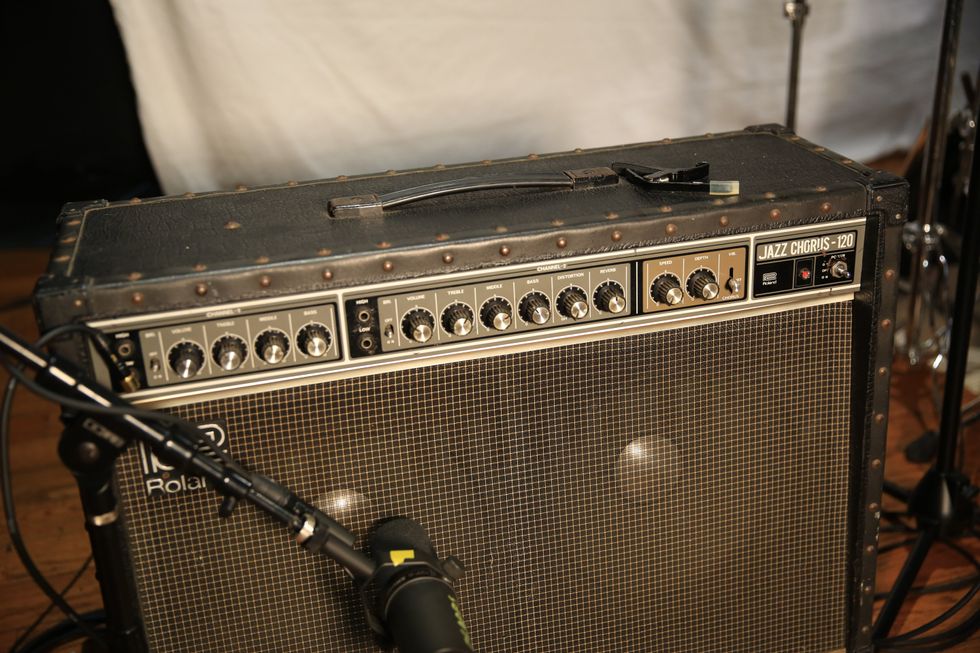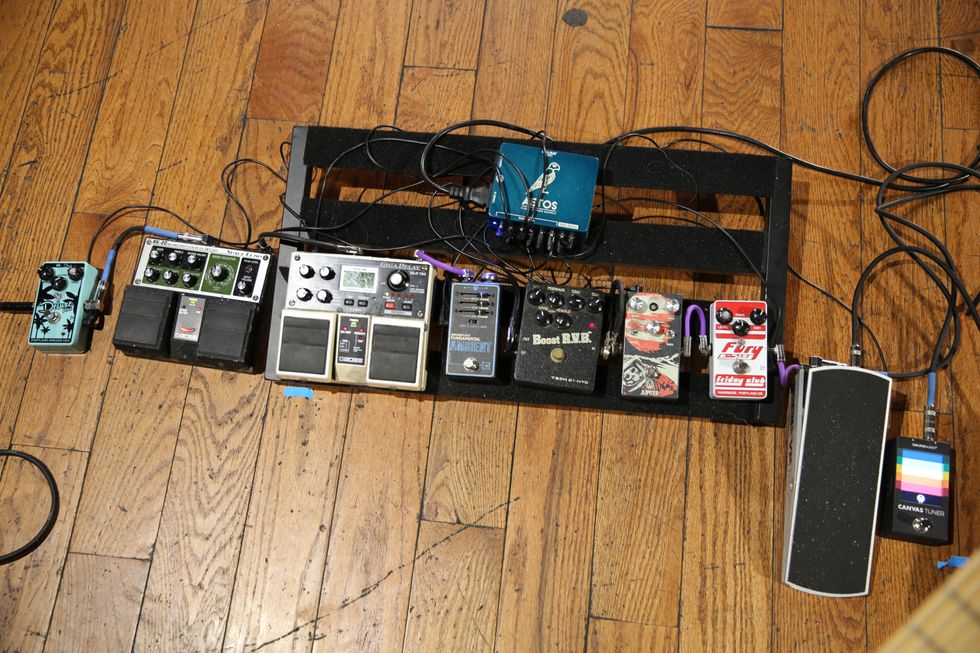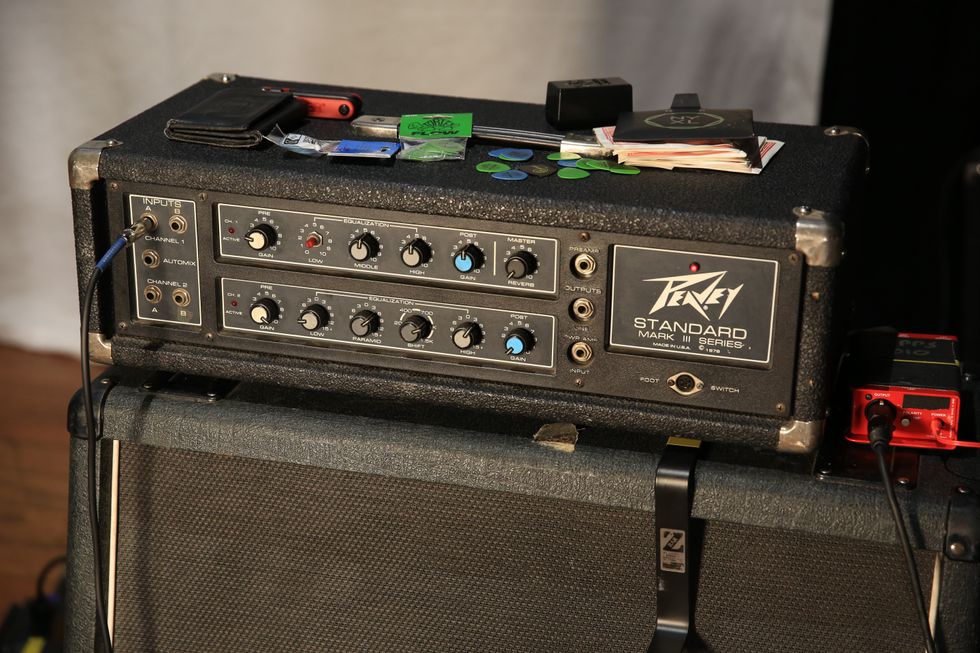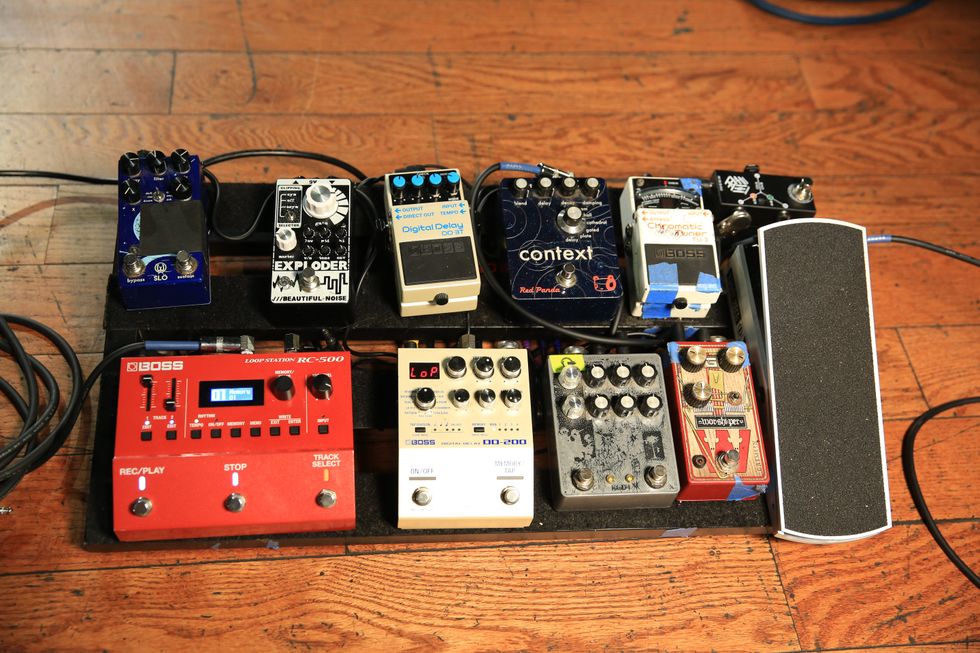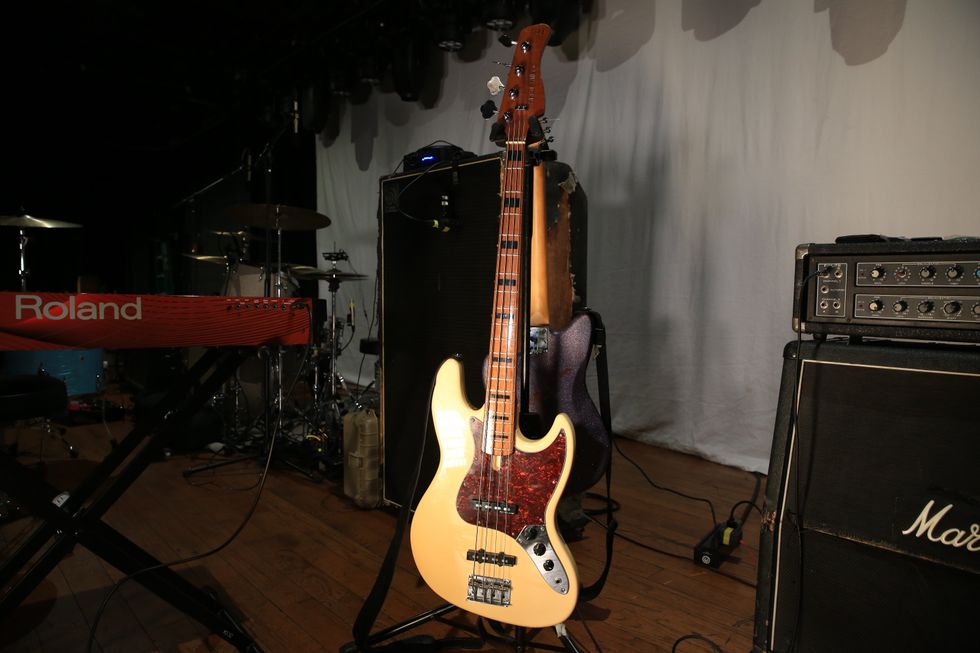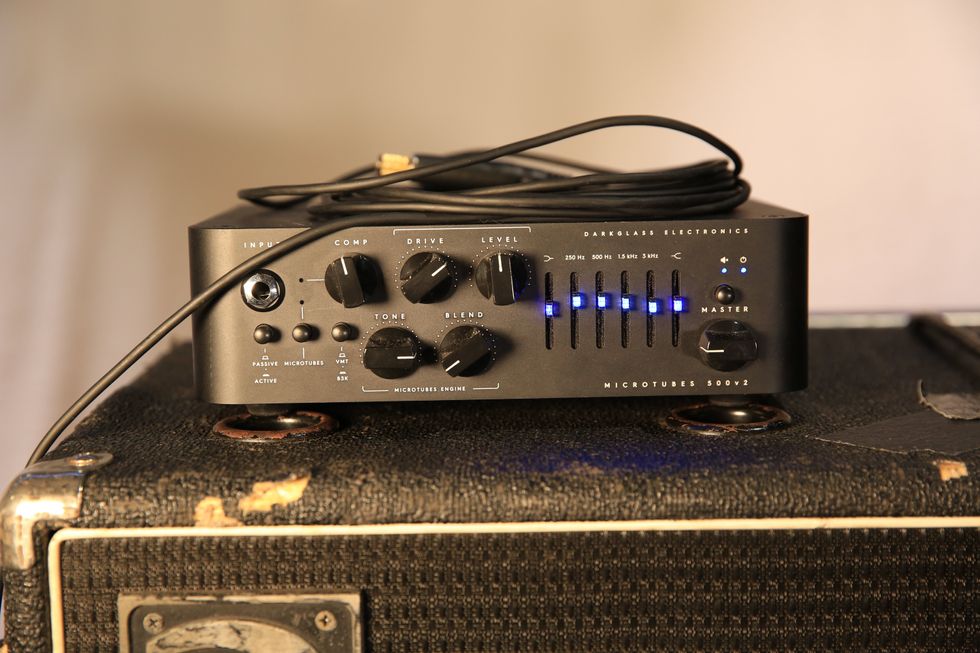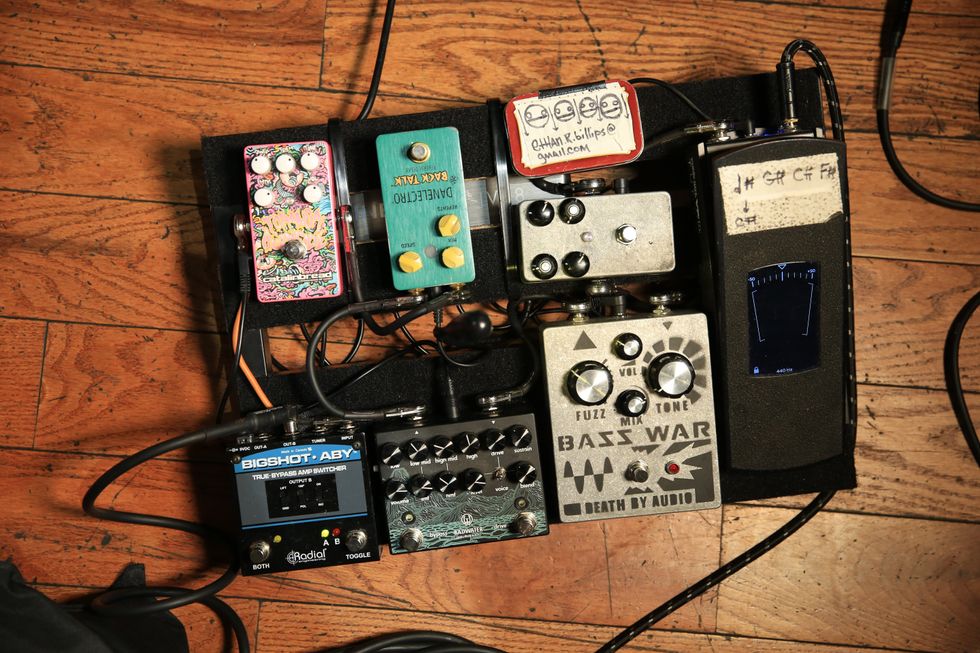Clip 1: [Using Fender JMJ Mustang] CHANNEL A settings: bass 2 o’clock: lo mid, hi mid, and treble at 9 o’clock. Switching to CHANNEL B settings: bass 11 o’clock: lo mid, hi mid, and treble at 1 o’clock.
Clip 2: [Using Sandberg California] Sample starts out on a flat channel A, then switches to a more mid-heavy dialed channel B, and then engages effects loop connected to a Red Witch Factotum with blend at 50 percent.
RatingsPros:Great tone. Easy navigation. Cons: Crowded back panel. Street: $599 Trickfish Trilobite trickfishamps.com | Tones: Ease of Use: Build/Design: Value: |
The late Richard Ruse founded Trickfish Amplification in 2014. Fueled by the intention of building high-end bass gear for the discerning player, the company released its flagship amplifier, called the Bullhead. Because today’s bassist wants consistency in an inconsistent gig world, adaptability is one of the features the Trickfish brass wanted to integrate into their newest creation. How players could benefit from the Bullhead’s preamps to get its tone onstage, in the studio, and in the woodshed from a portable, user-friendly package is the question Trickfish engineers asked, and thus created their newest aquatic themed creation: the Trilobite.
Tri This One
The Trilobite is a powerful DI with a footprint about the size of a mini iPad, and weighs in at less than 2 pounds, which makes it pedalboard friendly. It has a clean face with three stomp switches, two rows of gain and EQ controls, and a back panel that, at first glance, may look a bit overwhelming to some. I promise this is not the case, however, because the folks at Trickfish made the Trilobite relatively easy for every level of player to manage.
The Trilobite is a 2-channel system, which utilizes the preamps from the aforementioned Bullhead amp. This configuration lets you dial in two EQ settings, which can be used for one instrument or two, selectable via the dual/mono switch on the rear panel. This is especially helpful for players that need, say, upright and electric EQs—or maybe your fretless EQ is different from your other electric bass. Or, if you’re working just one bass, use one channel with the switchable effects loop, and easily toggle between your dialed-in settings.
Another nice feature of the Trilobite is the pair of XLR outs. The benefit of this setup is twofold. First, both can be used in tandem to send one signal to FOH and another to your in-ear set up, which you can then blend via your belt pack. This helps because then you can hear your tone in your in-ears—important for a great gig—and have some tonal control. And in the studio, using the effects loop, one can dirty up the signal with the aux XLR. When selecting the pre out on the main DI, the aux defaults to post mode. This is effective because you can track two bass parts at once, giving the producer an unfettered option in case the effects used on the other pass need to change.
Did I mention the 1/8" aux in and headphone out? Did I mention there’s a dedicated tuner out to clean up your signal chain? A separate tuner out may not seem like a big deal, but to me, it means there is one less piece to troubleshoot if problems arise.
All Treats, No Tricks
I used both an active Sandberg California and a passive Fender JMJ Mustang for this review. The basses are on different ends of the tonal wheel, and I know what each bass should sound like. I ran the Trilobite into my PreSonus Studio One and utilized Ultrasone Studio headphones to get a very accurate picture of the EQ section.
First up was the J-style Sandberg. When I plugged it into the Trilobite, I was able to quickly dial in a really sweet tone on channel A by boosting the bass a little and rolling off the high mids and highs just a hair. The EQ on the Trilobite is powerful yet detailed, and won’t let you get into a huge amount of trouble. The knobs are pretty tight, so turns make subtle changes, and if your cable accidentally hits a knob, you’ll be safe.

My Mustang strung with flats gave me similar results. A great tone is not hard to dial up, and ear-pleasing fixes are precise. I was able to get a little more subterranean with the short-scale Mustang, and I loved how the low end of the Trilobite pleased my inner reggae. Leaving the islands and getting back to reality, the nuances of the bass came alive when I switched to channel B and rolled in more mids, which can be heard in Clip 1.
With bass effects, we have to deal with the typical low-end drop-off from time to time when using something like overdrive, so I appreciate the Trilobite’s effects blend control on the rear panel. The control isn’t so much a wet/dry blend, but rather sounds more like a second amp being turned up with the dry signal. Speaking of the rear panel, it can get a bit crowded very quickly. The routing options are great, but when using straight 1/4" cables (like I was), the effects blend control—located below the jacks—is all but inaccessible in the heat of battle. For a fix, Trickfish suggests using space-saving pedalboard cables to best take advantage of all the back panel's features.
The Verdict
What can one say about a great sounding DI that offers rich EQs, lots of routing options, and weighs less than 2 pounds? I’d say well done. The Trilobite is a powerful unit that could easily find a home in a lot of studios and on live pedalboards. I appreciate the options that are available and would like them even more if the back panel wasn’t quite so crowded. Tonally, the Trilobite is a beast, and that’s the best and most important part. If you’re in search of a solution DI, the Trilobite is worth a try.
Watch the Review Demo:




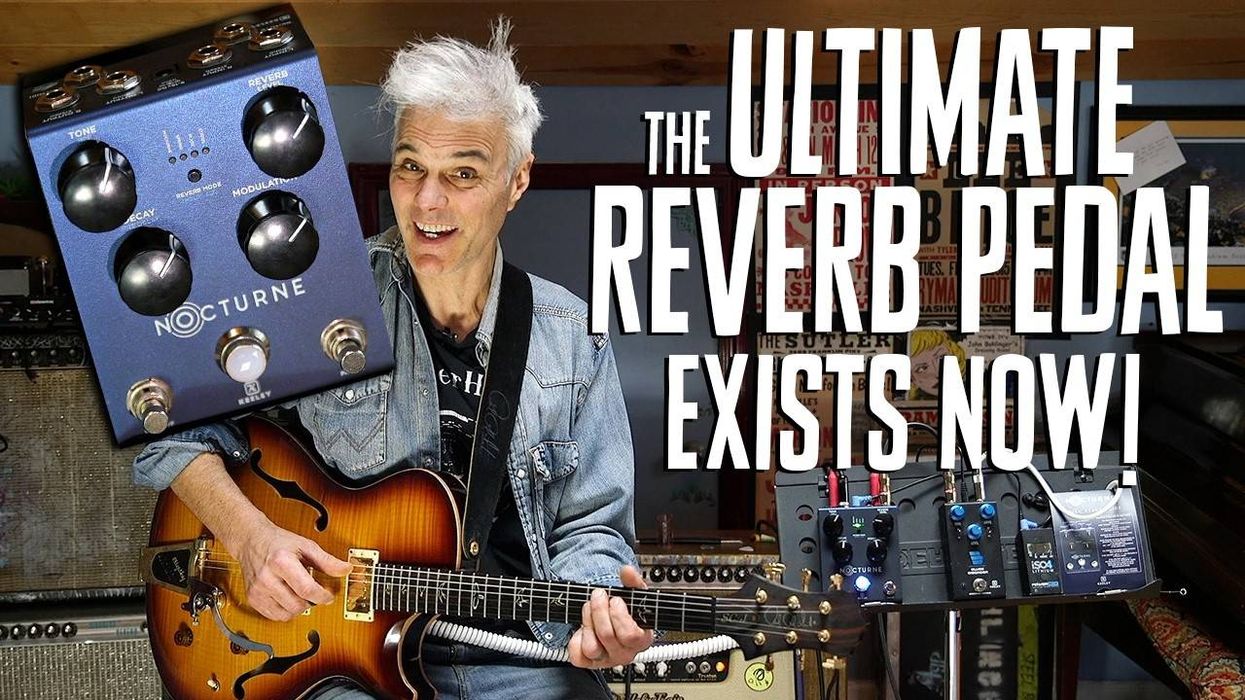

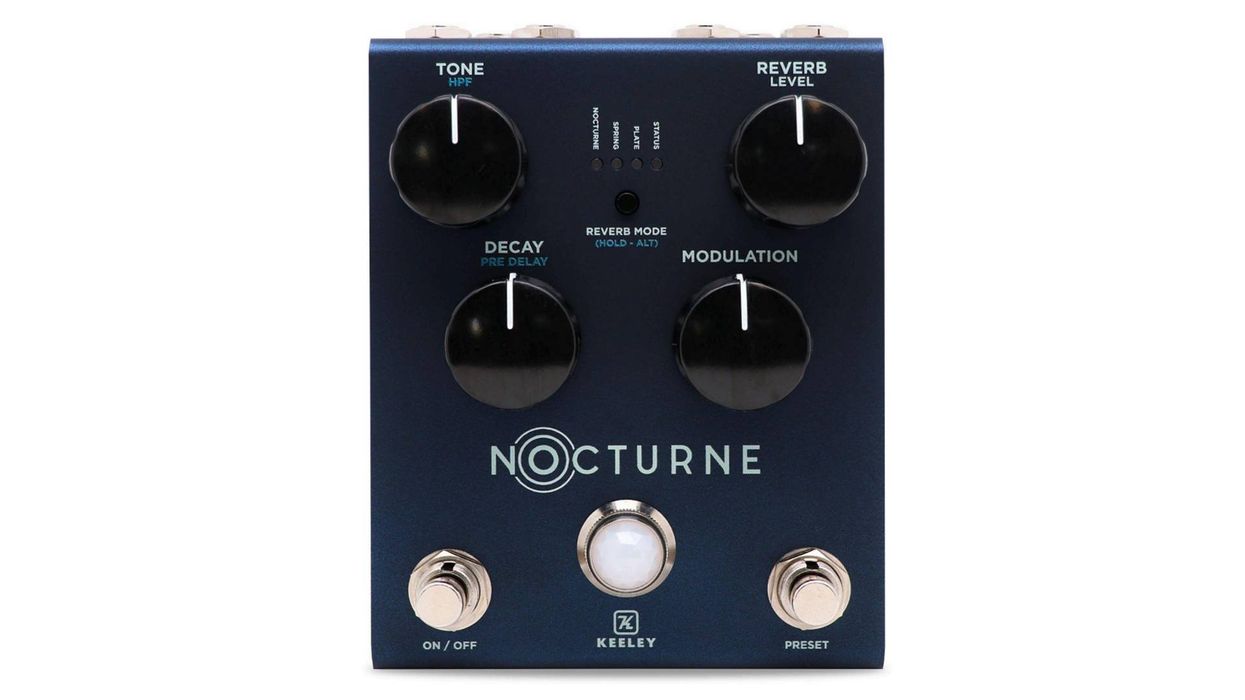
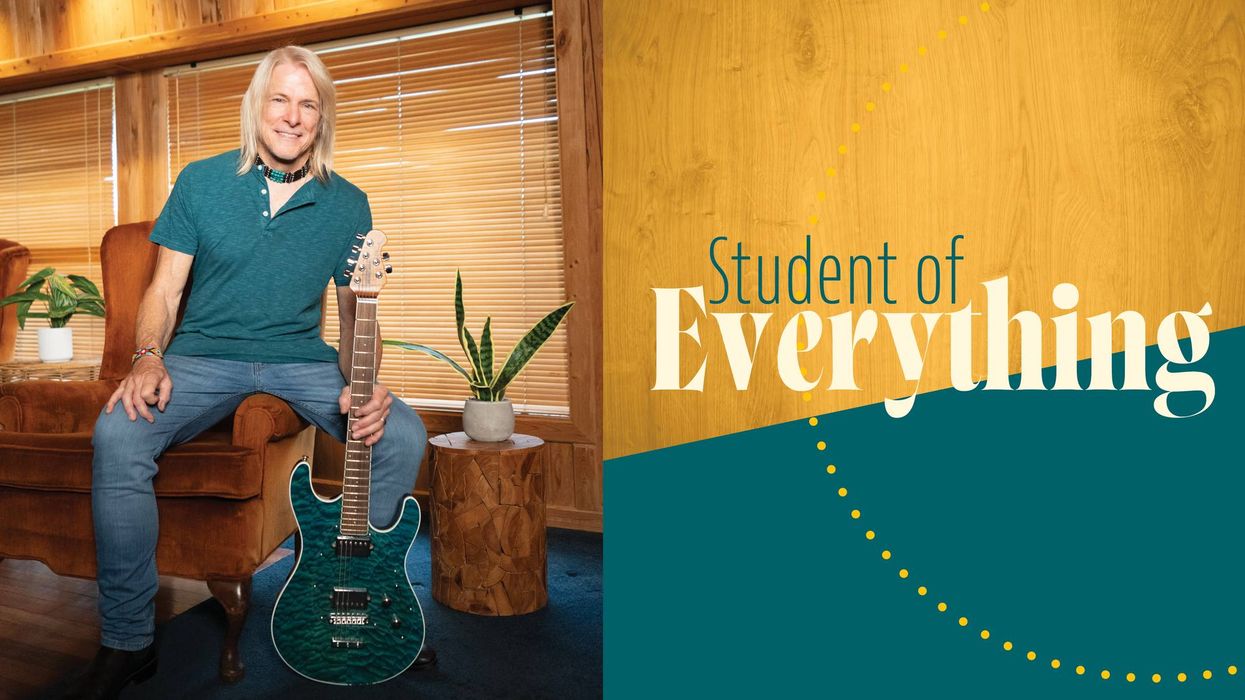
![Rig Rundown: AFI [2025]](https://www.premierguitar.com/media-library/youtube.jpg?id=62064741&width=1245&height=700&quality=70&coordinates=0%2C0%2C0%2C0)












 Shop Scott's Rig
Shop Scott's Rig





